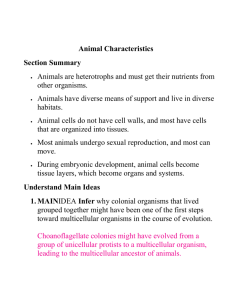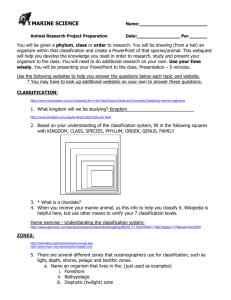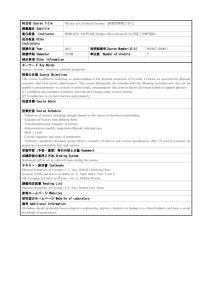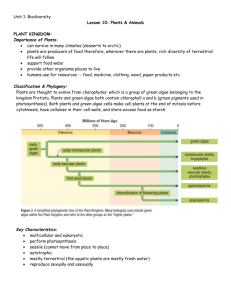Lecture 2 - Mineralogy
advertisement
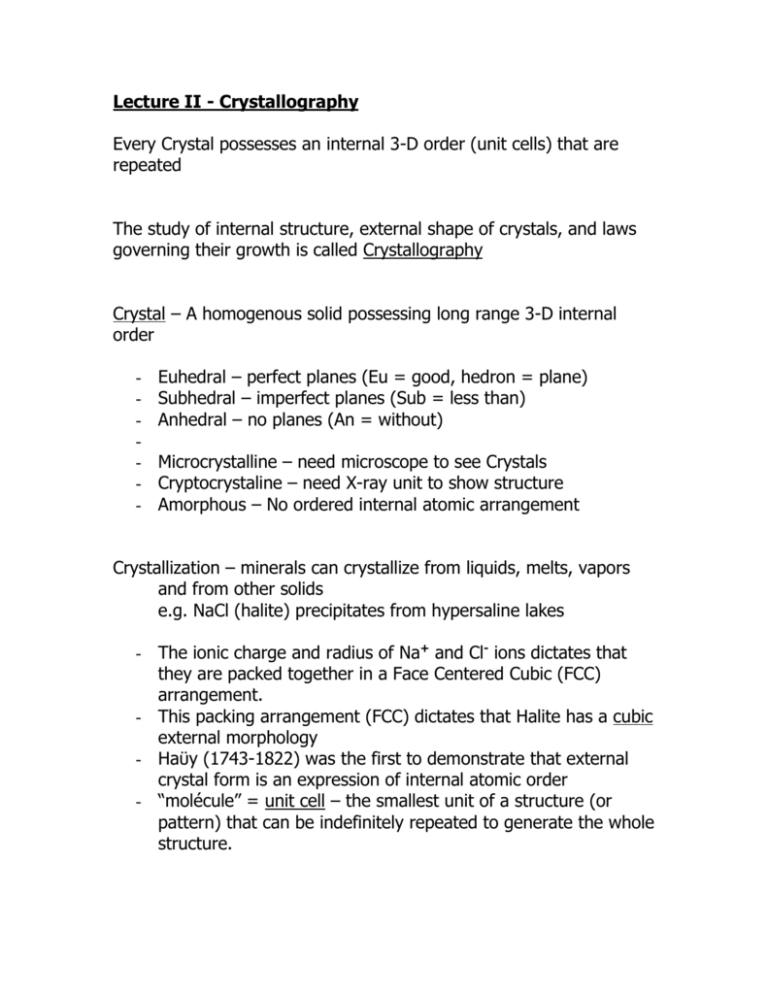
Lecture II - Crystallography Every Crystal possesses an internal 3-D order (unit cells) that are repeated The study of internal structure, external shape of crystals, and laws governing their growth is called Crystallography Crystal – A homogenous solid possessing long range 3-D internal order - Euhedral – perfect planes (Eu = good, hedron = plane) Subhedral – imperfect planes (Sub = less than) Anhedral – no planes (An = without) Microcrystalline – need microscope to see Crystals Cryptocrystaline – need X-ray unit to show structure Amorphous – No ordered internal atomic arrangement Crystallization – minerals can crystallize from liquids, melts, vapors and from other solids e.g. NaCl (halite) precipitates from hypersaline lakes - The ionic charge and radius of Na+ and Cl- ions dictates that they are packed together in a Face Centered Cubic (FCC) arrangement. - This packing arrangement (FCC) dictates that Halite has a cubic external morphology - Haϋy (1743-1822) was the first to demonstrate that external crystal form is an expression of internal atomic order - “molécule” = unit cell – the smallest unit of a structure (or pattern) that can be indefinitely repeated to generate the whole structure. Symmetry Elements Include Rotational Axis, Mirror Planes and Centers of Symmetry (1) 1 2 3 4 6 – – – – – Rotational Symmetry – in crystals there are only 5 kinds of rotational symmetry (around an axis). Fold symmetry = no symmetry Fold symmetry – 180° Fold symmetry – 120° Fold symmetry – 90° Fold symmetry – 60° No crystals have 5 – Fold symmetry. Starfish and Echinoderms and some similar organisms have 5 – Fold symmetry (2) Planes of Symmetry = mirror (across a plane) (symbol “m” used to indicate mirror operation) (3) Inversion through a Center or point (through a point) (symbol “i” used to indicate inversion center operation) (4) Translational Symmetry (symbol “t” is used) - lattice – periodic arrangement of points in space (upon which the unit cell is repeated) * There are only 32 ways to combine these symmetry operations = 32 Point Groups or Crystal Classes Rotational Operations – generate the same motif over and over again. They cannot make a change in the hand (start with left hand, always have left hand) Mirror or Inversion Operations – produce a change in hand (start with left – end up with right) Inversion Axis (improper axes) - combines rotation with inversion (aka roto-inversion) (1, 2, 3, etc.) _ _ 1 i (1 is preferred) _ 2 m (m is to the axes and also preferred) _ 33+i _ 4 unique _ 6 3m There are 10 basic symmetry elements: _ _ _ _ _ 1, 2, 3, 4, 6, 1 (=i), 2 (=m), 3, 4, and 6 (3/m) These symmetry elements can be represented by the symbols below – from Klein Fig. 5.20 (p. 188) Hermann-Maugin Symbols: Combination of numbers and letters to designate symmetry of the 32 crystal classes (International symbols). Examples: Symmetry of an ashtray 4-fold axis = (4) mirror plane = (m) diagonal mirror plane = (m) Point Group Notation 4mm




